Sarcococca confusa
SWEET BOX
Family: Buxaceae
Pronounced: sar-ko-KOAK-ah kon-FU-sa
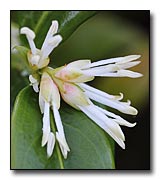
Quick Jumps
Growing Guide
Rainy Side Notes
GROWING GUIDE
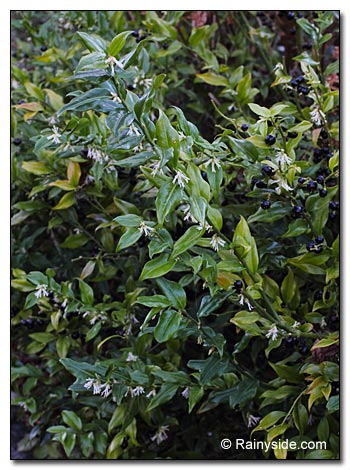
Origin:
Western China.
Plant Group:
Shrubs.
Hardiness:
Sunset zones: 4-9, 14-24.
USDA zones: 7-9.
Heat zones: 9-6.
Mature size:
Height 3-5 feet (1-1.5 m).
Width: 3 feet (1 m).
Flowering period:
January-March, sometimes as early as December.
Flowering attributes:
Clusters of five, inconspicuous, creamy-white blushed with pink, fragrant flowers, and long stamens that have snow white filaments and creamy-white anthers. Black berries follow the flowers.
Leaf attributes:
Alternate, elliptic, surface undulating, glossy, green, evergreen leaves.
Growth habit:
Rounded.
Light:
Deep or partial shade.
Soil:
Humus rich, fertile, moist, well-drained soil.
Feeding:
Side dress with compost or manure. Fertilize in spring with a complete organic fertilizer.
Propagation Methods:
Sow seed into containers in spring or autumn and place in cold frame.
Cuttings in summer.
Pruning Methods:
During mid-spring prune dead or damaged branches. Prune for symmetry after flowering.
Pests and Diseases:
No problems to speak of.
Rainy Side Notes
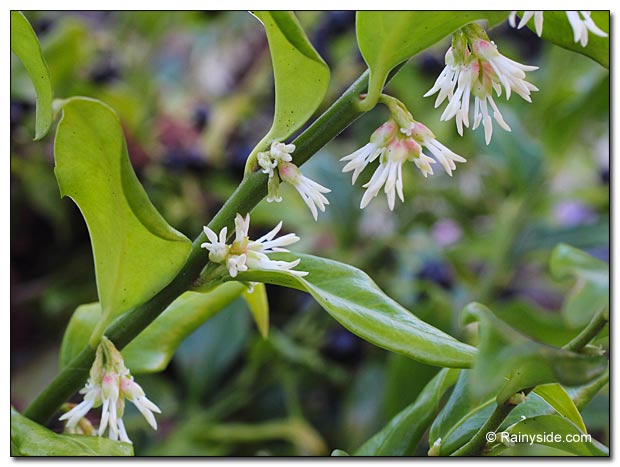
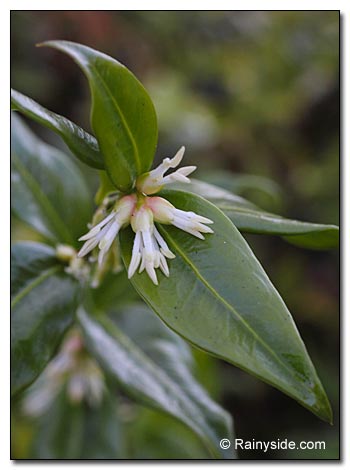
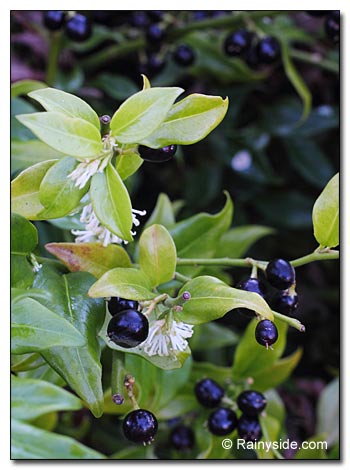
I love to pronounce the name of this genus, Sarcococca. It's a word that bounces around the mouth and quickly slips out like a giggle—sar-ko-KOAK-ah. I wish we had more words like this, but I would be too busy playing with them and not finishing my writing.
The intriguing part about Sarcococca is that it blooms in winter. When you walk in the garden, Sarcococca's fragrance knocks on the olfactory nerve. It makes you want to take a deep breath of its divine scent. I first caught a whiff of it in January, before the turn of the century. I walked through the garden at Heronswood in Kingston, Washington. The fragrance caught my attention, and I searched what flower gave itself away in the middle of winter.
Imagine my surprise when I discovered this delightful fragrance's source was a tiny, almost inconspicuous white flower on the sweet box shrub. The glossy black berries also caught my eye. I had to introduce this wonderful fragrance to my winter garden! The genus of shrubs came to live in my garden. Its sweet scent reminds me of the joy of having this shrub or any plant blooming in the garden in the dead of winter.
The first collected seed originally came from China in 1908 and was introduced for cultivation in 1916.
Its common name, sweet box, comes from being in the boxwood family. Unlike other boxwoods, Sarcococca doesn't smell like dirty sweat socks or cat pee when wet.
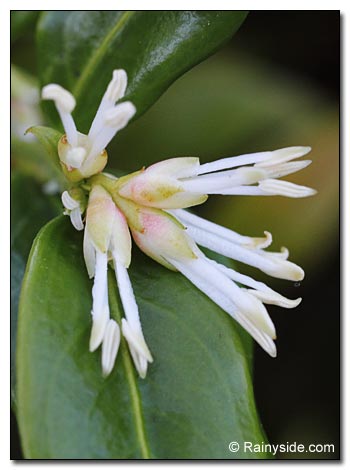
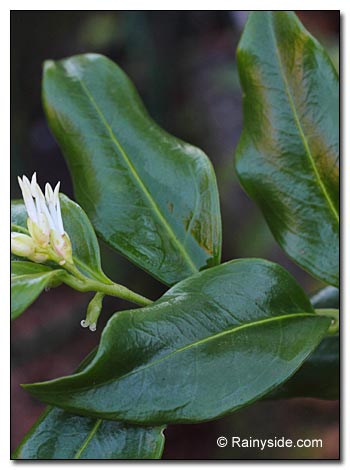
Photographed in author's garden.

Gardening for the Homebrewer: Grow and Process Plants for Making Beer, Wine, Gruit, Cider, Perry, and More
By co-authors Debbie Teashon (Rainy Side Gardeners) and Wendy Tweton.

